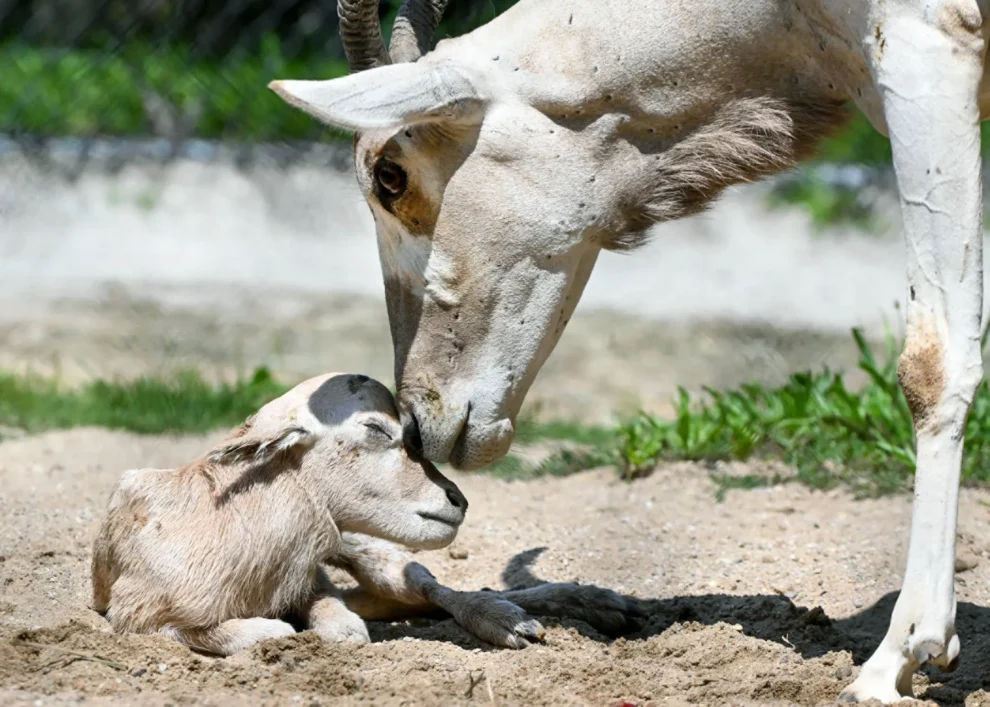In the afternoon of 8 August, guests who were lucky enough to be visiting the antelopes’ outdoor habitats on the northwest side of Brookfield Zoo in Brookfield, Ill., witnessed the birth of an approximately 15-pound male addax calf. This is the third addax born at the Zoo in just over a year. This is the nearly four-year-old mother Ivy’s first calf and the fifth for the nine-year-old sire, Ishnala. Their pairing was based on the Association of Zoos and Aquariums’ Species Survival Plan® recommendation. An SSP is a cooperative population management program for select species in accredited North American zoos and aquariums. Each plan manages the breeding of a species to maintain a healthy and self-sustaining population that is genetically diverse and demographically stable.
Addax are considered a “hider or nesting species,” so those planning to visit Brookfield Zoo in the coming weeks may see the calf lying down. The calf may be indoors behind the scenes if it isn’t visible. The addax also called the white antelope or screwhorn antelope, is known for its white coat and impressive spiraling and twisted horns ranging from two and a half to three and a half feet long. It is a true desert-adapted antelope—the only one of its genus. Addax can get water from the plants they eat. Additionally, they have broad flat hooves that keep them from sinking in the desert sand.
The critically endangered African antelope is at serious risk of extinction in the wild, with estimates of less than 100 individuals remaining. The nomadic, desert-living ungulate was once found throughout northern Africa. They are known to only exist in Chad, Mauritania, and Niger. Threats to the population include uncontrolled hunting for their impressive spiraling horns, meat, and hide and disturbance to its habitat for oil exploration. Brookfield Zoo was the first zoo in the United States to have an addax and has had more than 140 births of this species since. There are likely more addax in zoos than in the wild, with more than 160 individuals being cared for in 22 AZA-accredited facilities.
Source: AZA
















